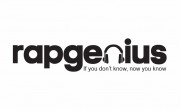By Katie Bain
The visual tech wizard behind Amon Tobin’s (and Infected Mushroom’s, Drake’s, Ultra’s main stage and many more!) show, Vello Virkhaus talks to SoundCtrl about inspiration, preparation and voyaging to deep space.
SoundCtrl – How did you start VJing?
Vello Virkhaus – VJing was a direct result with the Gallery 2 production artist space from School of the Art Institute of Chicago. They had a gallery space for performance. It was always static to me. My roommate was into electronic music and introduced me to the album ISDN by Future Sound of London. I was like, what was that sound? In ’91, I heard that kind of electro break beat music and then I got to Chicago and it was on.
SC - What did your early performances look like?
VV - All of the equipment was borrowed. We had film loops and slides. I was into robotics. Being in art and technology was a big inspiration.
SC - How has the exponential tech growth of the last decade affected your work?
VV – The explosion in technology made it affordable. I was working at a post company and couldn’t afford an SGI to work with. The one computer was $80,000 and the software was $10,000. It was really expensive to enter the computer graphics field. Desktop computing changed the whole thing.
SC - How much of an influence has electronic music had on your work?
VV – That’s what inspired us to do live performances in the first place: electronic dance music and the whole DJ movement. I got totally into drum & bass when it first came out. I was so into Amon Tobin and the whole Ninja Tune sound. I had all the 7” vinyl.
SC - Where did your inspiration for the Amon Tobin concept come from?
VV – It was a function of desiring a wild environment to be in with fewer rules. I wanted to make a wild experiential territory where people could get involved in the whole space. Amon Tobin was a big step for us in terms of going to the next level with technology we had been creating.
SC - What inspires you?
VV - Journeying to space is exciting. I love science fiction. I’m super into it. I always want to have a big space moment. I like the idea of visually representing traveling really far away to unknown places that you can have a fantasy inside of, so I’m always drawn to space.
SC - Audiences are known to leave shows that you’ve worked on saying it was one of the most incredible things they’ve ever seen. Why are reactions so extreme?
VV – I think it opens them up to being free themselves and enjoying movement in an expansive territory and focusing on small details and then watching inside these forms. There’s a lot to grab onto, a lot of little details that can keep your attention. Sometimes it’s very subtle and simple which I think is good for a video accompaniment to music. In between the really tight digital audio reactive sculptural pieces, I like to have that open territory.
SC – Take us through the experience of one of your shows.
VV – It really is like going underground and then rising up through the oceans to open space and traveling really far away and then landing in another unknown place and then being completely annihilated and then being reformed from pixels and surviving and then coming through to the end which just goes into improvisation. It gets the most detailed and complicated at the end.
SC – You recently completed the new stage production for Infected Mushroom. What was that collaborative process like?
VV – That project started as a conversation that generated an idea about the shape of the set pieces [which are round]. From there, we started writing a story with what the structure of what the show would be. The production time was 15 weeks. More than 16 people worked on it.
SC - How do you know when you’ve succeeded?
When the first real show plays. When the artist starts what they’re doing and it turns on, it’s like ‘Okay, I made it.’ Until then it’s just a climb.







![[Interview] With Their Stunning Crystallized Volcano, Krewella Hopes to Blow Fans’ Minds](http://www.soundctrl.com/blog/wp-content/uploads/2013/09/Identity_Set-50x50.jpg)








Comments are closed.